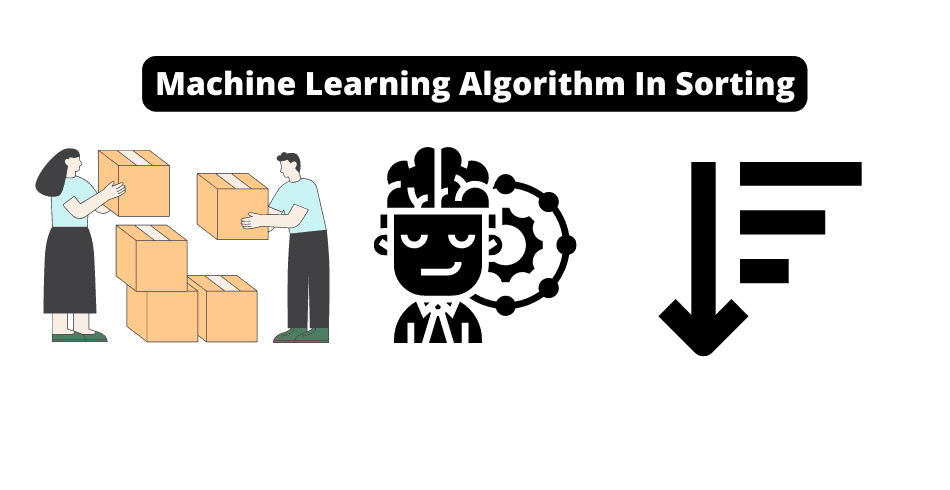Every computer science student had to deal with sorting algorithms while learning how to code.
While traditional sorting algorithms have been in use for decades, the rise of machine learning has given birth to a new type of sorting algorithm that has brought just as much commercial value as the originals.
In fact, machine learning algorithms have found applications in a wide range of sorting problems, from sorting images and videos to sorting fruit on a conveyor belt.
In this blog post, we’ll explore some of the machine learning algorithms that are being used behind the scenes for sorting, including their strengths and weaknesses.
Whether you’re a seasoned machine learning expert or just getting started with this exciting field, this post will give you a better understanding of how machine learning is transforming the world of sorting.
So, let’s dive in and discover the algorithms that are powering the future of sorting!

Understanding The Machine Learning Problem
When it comes to using machine learning for sorting, it’s essential to consider the approach you want to take.
One option is to use computer-generated rules to sort your items, which involves training a machine-learning model to recognize patterns in your data and make decisions based on those patterns (unsupervised learning).
This approach is often used when you don’t have pre-existing rules or knowledge about the data you’re sorting and want the model to create them without any form of bias.
On the other hand, you can also use human-generated rules to sort your items (supervised learning).
This approach involves defining specific criteria for sorting items based on prior knowledge or expertise in the field.
For example, you might sort medical records based on the patient’s age, symptoms, or images based on their color, brightness, or other visual features.

This can be useful when you know the data and want to ensure that the sorting process aligns with your personalized end goal.
In either case, the key is to choose the approach that best fits your needs and business goals.
Whether you choose a machine learning-based or human-made-rule-based approach, both have their strengths and weaknesses, and it’s important to evaluate each approach in the context of your specific use case.
By taking the time to carefully consider your options and choose the best approach for your needs, you can ensure that your sorting process is effective and efficient and ultimately achieves the results you’re looking for.
Supervised Learning: How Support Vector Machines Sort
Support Vector Machines (SVMs) are a type of supervised machine learning algorithm used for classification and regression analysis.
In SVMs, a model is trained on a labeled dataset to find the optimal boundary that separates different data classes.
This boundary is based on human-made rules, as the algorithm relies on pre-existing knowledge of the data to classify new instances.
Once this boundary is created, more items can then be sorted into these categories, allowing businesses to quickly and efficiently sort new-found information.
SVMs are often used in image recognition, natural language processing, and other applications requiring classification.
They’re even being used to sort fruit!
Relevant Viewing:
SVM algorithm in Python
from sklearn import datasets
from sklearn.model_selection import train_test_split
from sklearn.svm import SVC
# Load the iris dataset
iris = datasets.load_iris()
X = iris.data
y = iris.target
# Split the dataset into training and testing sets
X_train, X_test, y_train, y_test = train_test_split(X, y, test_size=0.3, random_state=0)
# Create an SVM classifier
clf = SVC(kernel='linear', C=1, gamma='auto')
# Train the classifier using the training data
clf.fit(X_train, y_train)
# Make predictions on the testing data
y_pred = clf.predict(X_test)
from sklearn.metrics import accuracy_score
# Evaluate the accuracy of the classifier
accuracy = accuracy_score(y_test, y_pred)
print("Accuracy: {:.2f}".format(accuracy))
Unsupervised Learning: How Clustering Algorithms Sort
Clustering algorithms are a type of unsupervised machine learning algorithm used to sort data into clusters based on some machine-discovered similarity.
Unlike supervised algorithms, clustering does not rely on pre-existing categories or labels to sort the data.
Instead, the algorithm automatically groups the data based on shared characteristics without humans’ prior knowledge or input.
This makes clustering helpful in discovering patterns and relationships in data that may not be immediately apparent to humans.
It has applications in fields such as marketing, customer segmentation, and anomaly detection.
Some common clustering algorithms include
- K-Means (Most Famous)
- Hierarchical Clustering
- Density-Based Spatial Clustering of Applications with Noise (DBSCAN)
K-Means algorithm in Python
from sklearn.datasets import make_blobs
from sklearn.cluster import KMeans
import matplotlib.pyplot as plt
# Generate a random dataset with 100 samples and 2 features
X, y = make_blobs(n_samples=100, centers=3, n_features=2, random_state=0)
# Plot the original dataset
plt.scatter(X[:, 0], X[:, 1])
plt.show()
# Create a K-means model with 3 clusters
kmeans = KMeans(n_clusters=3, random_state=0)
# Train the model on the dataset
kmeans.fit(X)
# Make predictions on new, unseen data
new_data = [[-3, 0], [3, 0]]
predicted_labels = kmeans.predict(new_data)
print("Predicted labels for new data:", predicted_labels)
# Visualize the clustering results
plt.scatter(X[:, 0], X[:, 1], c=kmeans.labels_)
plt.scatter(kmeans.cluster_centers_[:, 0], kmeans.cluster_centers_[:, 1], s=200, marker='*', c='red')
plt.show()
How Algorithms Are Helping Commercial Businesses Sort Items
Algorithms have become an essential tool for commercial businesses to sort and classify items, enabling them to streamline their operations and improve efficiency.
By analyzing large amounts of data and identifying patterns, algorithms can help businesses quickly and accurately categorize items, reducing errors and staffing counts, all while saving time.
One example of how algorithms are helping businesses sort items is in e-commerce, where machine learning algorithms are used to sort and recommend products to customers based on their preferences and behavior.
This helps businesses increase sales and improve customer satisfaction by providing personalized recommendations and a better shopping experience.
Algorithms are also used in supply chain management, where they can help businesses manage inventory, track shipments, and optimize logistics.
By analyzing data on product demand, shipping times, and supplier reliability, algorithms can help businesses make better decisions about when and where to source products, reducing costs and minimizing delays.
Overall, the use of algorithms in sorting items is just one example of how technology transforms businesses, enabling them to work more efficiently and effectively in a rapidly changing marketplace and world.

- Unveiling the 4 Elements of Software Architectural Style [Must-Read Insights] - November 28, 2025
- Using KOMPLETE KONTROL Without Software: Troubleshooting Guide [Unlock Your Full Potential] - November 27, 2025
- The Ultimate Guide to Data Summarization in Data Science [Unlock Your Data’s Hidden Secrets] - November 27, 2025

